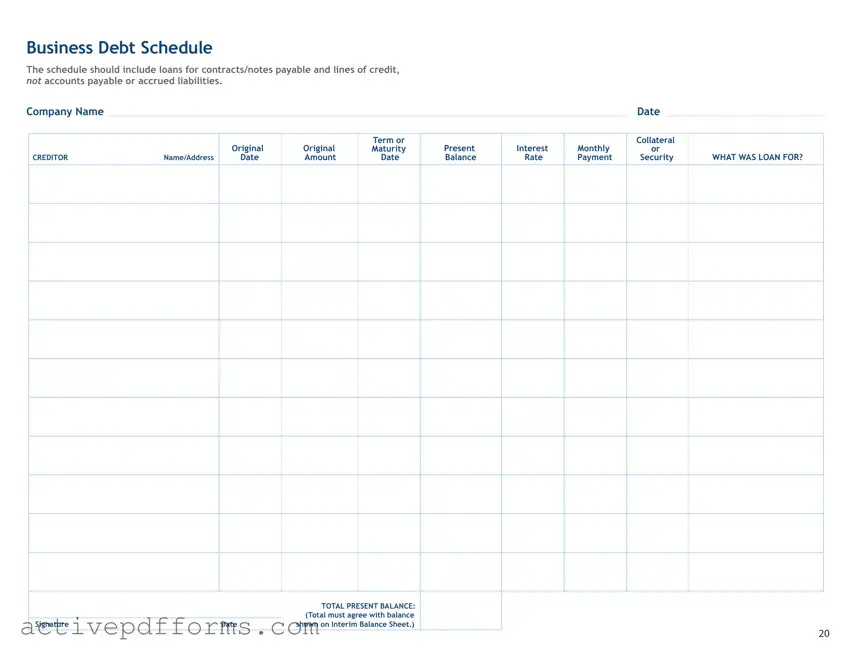A Business Debt Schedule form plays a pivotal role for companies striving to manage and articulate their financial obligations meticulously. It helps in organizing information about existing debts including loans, contracts/notes payable, and lines of credit, facilitating a clear overview for decision makers. It's important to note, however, that this form doesn't cover accounts payable or accrued liabilities. Essential details required on the form encompass pertinent information about creditors, such as names and addresses, alongside specifics of the debt: original dates and amounts, terms or maturity dates, present balances, interest rates, monthly payments, and any collateral or security tied to the loans. This document also prompts companies to specify the purpose of each loan, ensuring a comprehensive view of how debts have been utilized to advance the business's goals. Notably, the form requires a reconciliation step, mandating that the total present balance shown must align with the interim balance sheet's figures, thereby ensuring accuracy and transparency in financial reporting. Additionally, the inclusion of signature and date lines emphasizes the importance of accountability and formal acknowledgment of the documented information.

